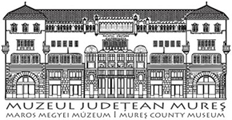Marisia - Maros Megyei Múzeum Évkönyve 31/1. (2011)
Articles
Archaeological Finds belonging to the Late Hallstatt and La Тёпе Period from Cämin 131 fragments of glass bracelets are frequent and they mainly appeared in settlements: Piscolt-Kmcsverem (Németi 2000,166-178, with further bibliography); Sajópetri-Hosszíí-dw/ó' (Szabó 2007, pl. CXXXVII/2). The sapropelit (or lignite) bracelets are well-known from the Celtic inhumation graves, but fragments also appeared in settlements, like at Sajópetri-Hosszú-dűlő (Szabó 2007, pl. CXXXVII/13; CXXXVIII/6-9). The Celtic settlement from Kálmánd-Krasznapart is 2 km long, along the Crasna River between the 5 and 6.8 river km. Many sites were registered at the territory called Disznólegelő, and between the 5.9-6.1 river km, while in D zone we did not find sites. Probably, the main part of the settlement was destroyed during the constructions drainage ditches. The LI dwelling feature with the great amount of iron slag should be emphasized, since it suggests the existence of a workshop of iron working, with analogies at Carei-Protestant cemetery (unpublished finds); Sajópetri-Hosszú-dűlő (Szabó 2007, 260-270, pl. LXII).1 According to the finds discovered at Ciumesti, Berea, Urziceni (from Nyírség, Ecsed Marsh), remarkable deposits of bog iron are known, which were used by the Celts for making weapons and artefacts. The settlement lacks appropriate artefacts for a precise dating. The fragments of big-sized brooches, glass bracelets, the wheel-thrown Celtic lid and the fragment of a wheel-thrown pot with burnished lattice decoration made us to conclude that the settlement at Kálmánd-Krasznapart could be dated to the end of the middle La Тёпе (LT C1/C2) period, analogous to the one from Nyékládháza-fsívdntó dated to LT C2-D1 phases (Hellebrand 2006,79-106, к. 7/1,8/13). APPENDIX Archaeological repertory of Cámin/Kálmánd-Kraszmjpűrf A. The drainage ditch along the right dike of Crasna river, from the Crasna bridge at Cäpleni to the Crasna bridge at Cämin (Pl. 1/5A). From an archaeological point of view, the most important area of this zone is Cämin-Disznólegelő (Pl. 2/1). Al. A part of settlement from Bodrogkeresztúr culture and contracted burial from the same period (Németi 1988b, 123-126). A2. At 250-300 m from the Crasna bridge towards the village Cäpleni, in the wall section of the ditch the remains of a Late Iron Age (Celtic) settlement were discovered. A3. At the same place fragments of Roman pottery from the Imperial period, some probably is belonging to the Przeworsk culture. A4. Isolated traces of an Avar settlement from the 8th-9th c. A5. The remains of village from the 13th—14th c. The village Cämin first appeared in the documents in 1392, mentioned as Ket-Kalmand (Borovszky 1910, 89; Németi 2002, 13-27; Németi 2009b, 18-42, 49-52; Németi 2009c, 33-68). B. The zone from the Crasna bridge towards village Cäpleni, on the left bank of the river, between the 5.6 and 5.9 river km (Pl. 1/5B). Bl. Some completely destroyed features from the middle Neolithic period. B2. Some refuse pits, wattle and daub, hearth, and fragments of pottery belonging to the Tiszapolgár culture, Middle Copper Age. B3. At the same place, partly superposed, the remains of a settlement from the Bodrogkeresztúr culture. B4. Isolated traces of a La Тёпе settlement. * 1Presenting the workshop of iron working from Sajópetri-Hosszú-dűlő, the authors also described the technologies of iron working.
